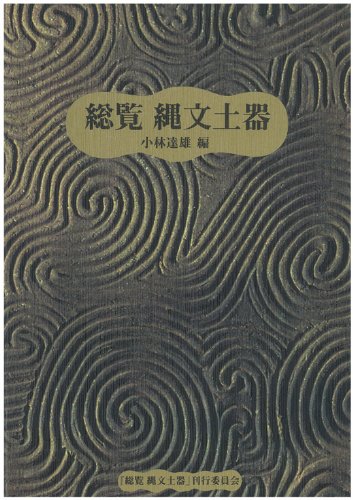1 0 0 0 縄文文化の研究
- 著者
- 加藤晋平 小林達雄 藤本強編集
- 出版者
- 雄山閣出版
- 巻号頁・発行日
- 1981
1 0 0 0 OA 野川先土器時代遺跡の研究
- 著者
- 小林 達雄 小田 静夫 羽鳥 謙三 鈴木 正男
- 出版者
- Japan Association for Quaternary Research
- 雑誌
- 第四紀研究 (ISSN:04182642)
- 巻号頁・発行日
- vol.10, no.4, pp.231-252, 1971-12-25 (Released:2009-08-21)
- 参考文献数
- 34
- 被引用文献数
- 1 3
A. The Nogawa Site and its Stone Culture (KOBAYASHI and ODA)1. The Nogawa site is located in Kamiishihara, Chofu City, Tokyo. It sits on a low bluff on the Tachikawa Terrace facing across a stream toward the higher Musashino Terrace marked by the Kokubunji Cliff Line (fig. 1).2. The site was first excavated in 1964, and exploratory excavations were carried on for the next several years (Kidder et al.: 1970). Then a project to widen the stream threatened to destroy the site, and in response the Nogawa Site Excavation Group was formed to excavate the endangered part of the site. Excavations were carried out from June to the end of August 1970 (Nogawa Iseki Chosa Kai: 1970, 1971a, 1971b, 1971c).3. Geologically the site has thirteen strata (fig. 3). The base stratum XIII is gravel. Over this are nine layers of loam, strata IV to XII, the so-called Tachikawa loam. Four of these strata, strata IVb, V, VII and IX, are black bands of fossil soils. Stratum III is the soft loam, stratum II is a brown humus, and stratum I is a black humus.4. Culturally there are eleven layers, ten Preceramic Period layers (numbered III, IV1, IV2, IV3a, IV3b, IV4, V, VI, VII and VIII to correspond to the geological strata in which they were found) and one mixed Jomon Period layer in stratum II. More than 10, 000 artifacts were recovered from the Preceramic Period layers. Over 2, 000 are tools or flakes. Another more than 7, 000 artifacts are fire-reddened gravel usually found in heaps. The clarity of stratification, the number of layers, and the quantity of artifacts make Nogawa the best stratified, Preceramic Period site in Japan.5. The Nogawa data, when correlated with data from other sites in Kanto (fig. 7-10) (in particular, the Heidaizaka Site and ICU Location 15 in Koganei City and the Tsukimino Site Group on the Sagami Terrace in Kanagawa Prefecture), allows definition of four broadly defined phases for the Preceramic Period. The earliest phase, Nogawa layers VIII to V (Heidaizaka layers X to V), has mostly flake tools plus some heavy-duty tools made from pebbles. Phase II, Nogawa layers IV4 to IV1, is characterized by backed blades. Temporally related changes in the form of these backed blade tools are apparent. The early assemblages of the phase are marked by lightly worked blades of knife-like form. Later assemblages see changes to smaller tools of more geometric form and the appearance of small, bifacially worked points. (Phase III of the South Kanto Preceramic Period is distinguished by the presence of microblades and the cores from which they were obtained. However, this phase is not represented at the Nogawa site). The latest Preceramic Period phase, phase IV, Nogawa layer III, consists mainly in large, biface points and pebble tools.6. The heaps of fire-reddened gravel are found mostly in Nogawa layers IV1 to IV4, i. e. Preceramic Period phase II. X-ray diffraction analysis done by M. Suzuki of Tokyo University shows the stones to have been heated to more than 600°C. The meaning of these heaps is unclear. It is not known whether they were used as found-single layers of gravel spread in near circular patterns one to two meters in diameter-or whether they were simply disposed of at a location in the site some distance from where they were used. However, many of the stones do have a kind of tar-like substance on them, and one is probably justified in thinking the stones were used directly in some manner for cooking. Also, pounding stones, grinding stones and anvil-like stones are frequently found in close proximity to the heaps.
1 0 0 0 総覧縄文土器 : 小林達雄先生古稀記念企画
- 著者
- 小林達雄編
- 出版者
- アム・プロモーション
- 巻号頁・発行日
- 2008
1 0 0 0 縄文人の意識革命(覚書)
- 著者
- 小林 達雄
- 出版者
- 大和書房
- 雑誌
- 東アジアの古代文化 (ISSN:09135650)
- 巻号頁・発行日
- no.111, pp.124-133, 2002
1 0 0 0 縄文時代の集落景観 (縄文時代の環境<特集>)
- 著者
- 小林 達雄
- 出版者
- 古今書院
- 雑誌
- 地理 (ISSN:05779308)
- 巻号頁・発行日
- vol.26, no.9, pp.p55-61, 1981-09
1 0 0 0 縄文人の哲学思想
- 著者
- 小林 達雄
- 出版者
- 國学院大學考古學會
- 雑誌
- 上代文化 (ISSN:03869083)
- 巻号頁・発行日
- vol.41, pp.1-16, 2010
1 0 0 0 縄文土器のかたちと心
- 著者
- 小林 達雄
- 出版者
- 国学院大学考古学資料館
- 雑誌
- 国学院大学考古学資料館紀要 (ISSN:09109188)
- 巻号頁・発行日
- vol.18, pp.23-44, 2002-03
1 0 0 0 OA 新潟県東頸城郡安塚町におけるテレビ受信状況
- 著者
- 小林 達雄
- 出版者
- 一般社団法人 映像情報メディア学会
- 雑誌
- テレビジョン (ISSN:18849644)
- 巻号頁・発行日
- vol.18, no.10, pp.655-655, 1964 (Released:2011-03-14)
1 0 0 0 先史世界における土器出現の歴史的・社会的意義
本研究は世界各地の土器の出現について、土器を発明・受容していく社会背景を解明することにその主眼を置いている。これまでの土器出現の問題は最古の土器の存在を突き止める研究に集約されていたが、本研究では地域ごとに異なる、生活の中に土器を取り入れていく人間活動の解明に努める。土器の用途は容器だけでなく、調理具・食器として、また鑑賞用や死者への副葬品、棺として使われてきた。ほかの素材に比べ土器が優れる点は、素材の粘土が入手しやすいこと、可塑性に富み自由な成形ができること、焼成後は硬く、耐火性を持つことである。衝撃を与えると粉々にでき、都合がよい素材である。これらの特性は、同じ形の土器が2つとない一方で、モチーフが特定の人間関係内で共有されることに繋がるのである。個性的な形は用途に応じてある程度のカタチを保たれながらも、様々に変化する。これらの共通性と独自性を時間軸に沿って整理し、地域毎の土器との向き合い方を研究していくことが中心となる。また、その土器保有していた集団の残した遺跡から検出された諸属性の分析から、当時の環境やそれに基づく生業活動を整理し、土器の受容形態を解明する。既存資料のデータの集成、整理分析を行ない各地域の土器出現の様相を解明してきた。世界的なデータベースの構築は困難なため東アジアを重点とした。また特定地域に絞って、土器を生活に組み込むシステムのモデル構築を試みた。一は土器自体に含まれる属性を分解し整理することにより、人間の製作物としての土器を徹底して分析し、製作モデルであり、他方は土器に付随するその他の遺物類や土器が検出された遺構・遺跡についても土器の使用痕跡と併せて解釈から土器の使用モデルの構築である。研究終了後の現在は、土器の出土状況の把握に重点をおいた発掘調査に継続的に取り組み、モデルの検証を図り、研究の位置づけを進めている。


